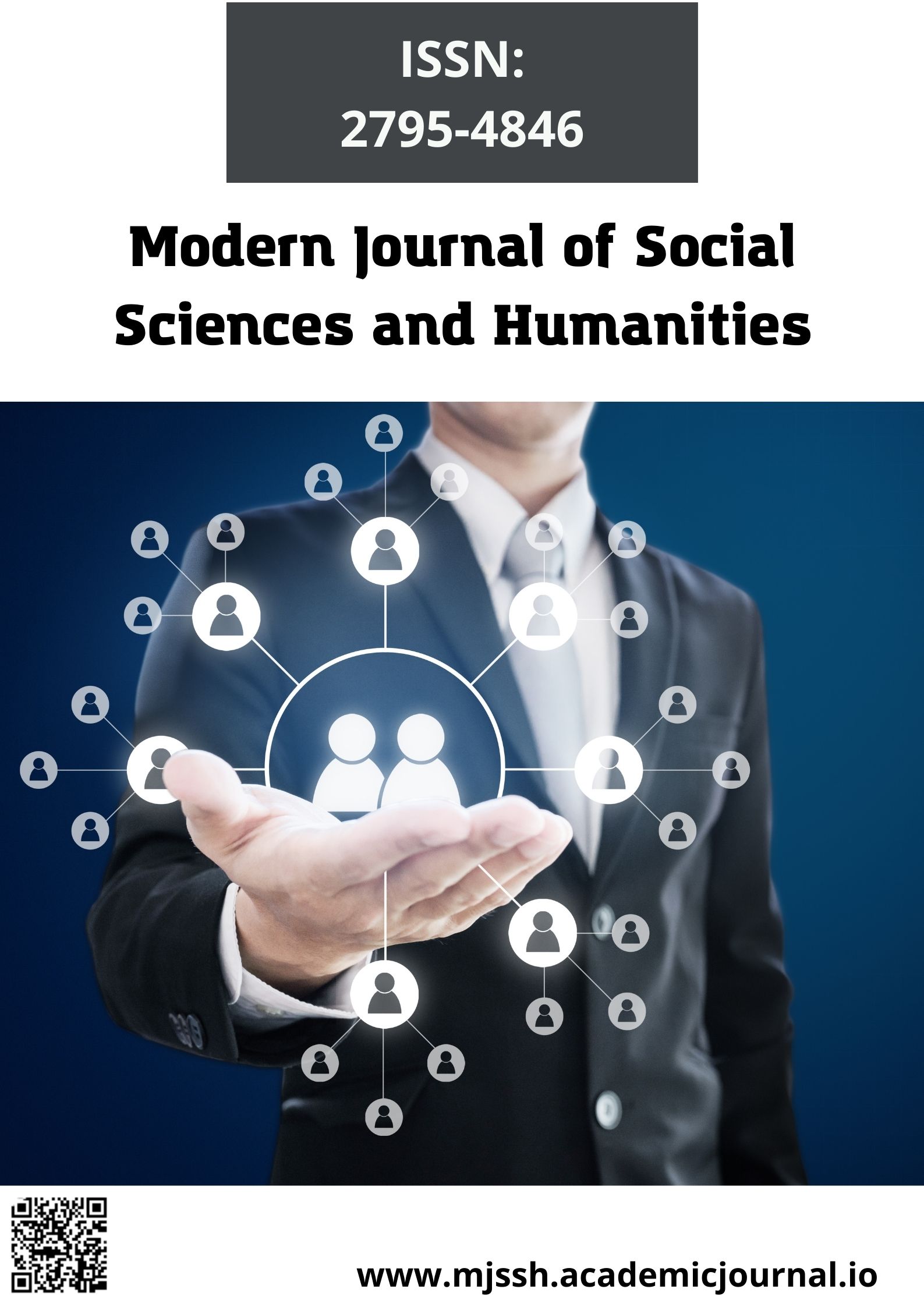Personnel Management Information System in Order to Create Up-To-Date and Integrated Personal Data and Information in the Personnel and Human Resources Agency in Malaka Regency
DOI:
https://doi.org/10.51699/mjssh.v1i7.613Keywords:
Management, Personnel, Systems and Technology.Abstract
Purpose: This study discusses the personnel management information system in order to create up to date and integrated personnel data and information in the Personnel and Human Resources Development Agency in Malaka Regency.
Research Methodology: This research uses a qualitative approach. Data collection methods for this research will be conducted by means of interviews, observation and document searches. The data analysis technique in this study is based on the theory of Miles and Huberman.
Results: In the application of the human resources management information system in order to create up-to-date and integrated personel data and information in the Personel and Human Resources Development Agency of Malaka Regency, both input and process are still not good. In addition, there are inhibiting factors for the application of the personnel information system.
Limitations: Researchers find it difficult to make more detailed observations so that they cannot display more related data and information.
Contribution: This research can be a scientific basis for evaluating the application of the personnel information system at the Personel and Human Resources Development Agency of Malaka Regency. In addition, this research can be scientific information for students of Public Administration Science.
References
Adriwati. (2001). Bunga Rampai Wacana Administrasi Publik: Menguang Peluang dan Tantangan Administrasi Publik. Yogyakarta: Graha Ilmu.
Ahmad Razimi, M. S. (2018). Comprehensive Strategy to Conduct a Mail Survey: Techniques to Improve Response Rates, 8(4), 89-96.
Akadun. (2009). Teknologi Informasi Administrasi. Alfabeta. Bandung.
Alvarenga, A., Matos, F., Godina, R., & CO Matias, J. (2020). Digital transformation and knowledge management in the public sector. Sustainability, 12(14), 5824.
Amegayibor, G, K.(2021).Training and development methods and organizationalperformance: A case of the local government organization in Central Region, Ghana.Journal of Social, Humanity, and Education, 2(1),35-53.
Arganaa, E, S., Romy Jun A. Sunicob, Virnille C. Franciscoc. (2020). Human Resource Information System with Digital Archiving. International Journal of Computer (IJC). (2020) Volume 39, No 1, pp 14-25. ISSN 2307-4523.
Beadles II, N. A., Lowery, C. M., & Johns, K. (2005). The impact of human resource information systems: An exploratory study in the public sector. Communications of the IIMA, 5(4), 6.
Davis, K., & Newstrom, J. W. (1985). Perilaku dalam organisasi.Jakarta: Erlangga.
Davis, Keith, and Newstrom, John, W. (2002). Organizational Behavior At Work. 11 edition. New York. Mc Graw
Dwiyanto, A. (2005). Mewujudkan Good Governance Melalui Pelayanan Publik. Pustaka Pelajar. Yogyakarta.
Gie, T, L. (1983). Administrasi Perkantoran Modern, Yogyakarta: Nur Cahyo.
Hartono, B. (2013). Sistem Informasi Manajemen Berbasis Komputer. Jakarta: Rineka Cipta.
Hmoud, B. I., & Várallyai, L. (2020). Artificial Intelligence in Human Resources Information Systems: Investigating its Trust and Adoption Determinants. International Journal of Engineering and Management Sciences, 5(1), 749-765.
Indrajit, R, E. (2011). Peranan Teknologi Informasi dan Internet.Yogyakarta: Andi Offest.
Kadir, A. (1999). Konsep dan Tuntunan Praktis Basis Data. Yogyakarta: Penerbit ANDI.
Kantaprawira, R. (1990). Pendekatan sistem dalam ilmu-ilmu sosial: aplikasi dalam meninjau kehidupan politik Indonesia. Sinar Baru.
Kementerian Dalam Negeri Republik Indoneia. (2000). Keputusan Menteri Dalam Negeri Nomor 17 Tahun 2000 tentang Sistem Informasi Manajemen Kepegawaian Departemen Dalam Negeri dan Pemerintah Daerah.
Komaruddin, S. (2003). Menejemen Marketing. Bandung: Kappa Sigma.
Kumorotomo, W., & Margono, S. A. (2004). Sistem Informasi Manajemen: Dalam Organisasi-Organisasi Publik. Yogyakarta: Gajah Madha University Press.
Matimbwa, H., Masue, O. S., & Shilingi, V. (2020). Technological Features and Effectiveness of Human Resource Information System in Tanzanian Local Government Authorities. American Journal of Operations Management and Information Systems, 5(3), 29-40.
Mcleod, R. (2010). Sistem Informasi Manajemen. Jakarta: Salemba Empat.
McLeod Jr, Raymod dan George. P Schell. (2008). Sistem Informasi Manajemen Edisi 10. Jakarta : Salemba Empat.
McLeod Jr, Raymond . (2001). Sistem Informasi Edisi 7 Jilid 2. Prenhallindo. Jakarta.
Moekijat. (2005). Manajemen Kepegawaian dan Hubungan Dalam Perusahaan. Edisi Ketiga. Alumni: Bandung.
Musanef. (1996). Manajemen Kepegawaian di Indonesia. Jakarta: Gunung Agung.
Nugroho, A. (2010). Rekayasa perangkat lunak berorientasi objek dengan metode USDP. Penerbit Andi.
Nworie, G. O., & Oguejiofor, B. C. (2023). Management Information System and Performance of Cement Firms in Southeast Nigeria. International Journal of Accounting and ManagementInformation Systems, 1(1), 1-15.
Pemerintah Kabupaten Malaka. (2017). Peraturan Bupati Malaka Nomor 54 Tahun 2017 tentang Kedudukan, Susunan Organisasi, Tugas dan Fungsi Serta Tata Kerja Badan Kepegawaian dan Pengembangan Sumber Daya Manusia Kabupaten Malaka
Pemerintah Kabupaten Malaka. (2016). Peraturan Daerah Kabupaten Malaka Nomor 19 Tahun 2016 Tentang Pembentukan Dan Susunan Perangkat Daerah Kabupaten Malaka
Pemerintah Republik Indonesia. (2013). Undang-Undang Nomor 3 tahun 2013 tentang Pembentukan Kabupaten Malaka di Provinsi Nusa Tenggara Timur. Lembaran Negara Nomor 18 Tahun 2013. Sekertariat Negara. Jakarta.
Pervin, M. T., & Begum, R. (2022).Engaging Employees in Management and Decision-Making Process: A Case Study on “Vision Garments Limited”.Annals of Human Resource Management Research, 2(1),71-85.
Siagian, S, P. (2008). Manajemen Sumber Daya Manusia (Edisi. Pertama). Jakarta: Binapura Aksara.
Simamora, H. (2004). Manajemen Sumber Daya Manusia. Yogyakarta: STIE. YKPN.
Silalahi, U. (2009). Metode Penelitian Sosial. Bandung: Refika Aditama.
Sutabri, T. (2005). Analisis Sistem Informasi. Andi. Yogyakarta.
Sutanta, E. (2003). Sistem Informasi Manajemen. Graha Ilmu. Yogyakarta.
Ukwuoma, H. C., Elisha, N. C., & Oye, P.O.(2022). The role of e-Government in overcoming the consequences of the COVID-19 pandemic in Nigeria. Journal of Governance and Accountability Studies, 2(1), 79-92.
Wandhe, P. (2020). Employability: A Review of Theoretical and Realistic Themes. Available at SSRN 3701085.
Yuliansyah, Yuliansyah. Meningkatkan Response Rate Pada Penelitian Survey Suatu Study Literature. (2016).
Zulfiani, Y. N. (2021). Prevention of personal data privacy leakage in e-government, as the government’s responsibility. Annals of Justice and Humanity, 1(1),29-37.
Zulfina, A., Matondang, A. R., & Sembiring, B. K. F. (2020). The Effects of Employee Management Information System (SIMPEG), Workplace Environment and Human Resources Quality on Performance through Employee Motivation to Digital System.






